
With each passing year, manufacturers seem to find another previously unsuspected gap in the market for kitchen appliances. Some of these new products find wide acceptance, such as slow cookers, while others linger for only a few years before vanishing from the stores. One relatively recent addition to the kitchen canon is the countertop roaster, a small, self-contained oven for roasting and baking.
Countertop Roasters
A countertop roaster is essentially an insulated box containing a heating element and a roasting pan. The insulated walls and heavy, tight-fitting lid trap heat in the roaster, making it the equivalent of a small oven. Most models are adjustable up to cooking temperatures of 450 degrees Fahrenheit. They usually include a wire rack for your roast or turkey to rest on, protecting it from burning on the bottom where the heat source is located. Although the heat source is close to the meat, cooking temperatures and cooking times remain the same as for conventional ovens. However, roasters have other benefits.
Moist Cooking
Roasting or baking is normally accomplished with dry heat. Moisture in your roast or turkey will naturally evaporate during the cooking process, because the air is dry and your oven vents both warm air and steam into your kitchen. Countertop roasters, with their tight-fitting lids, trap steam in the cooking chamber. This keeps the air moist, and helps minimize drying. Although this is a benefit overall, it means your roast or turkey won't brown during cooking. You can sear a roast ahead of time, or finish your bird in a conventional oven at high temperature to brown and crisp the skin.
Convenience
One of the strongest arguments for countertop roasters is convenience. They will bake, roast, steam or slow-cook your meals with equal aplomb, providing a degree of versatility conventional ovens don't readily approach. Larger models can accommodate multiple smaller baking dishes, allowing a whole meal to be prepared easily. They can even be used to bake bread or desserts. A countertop roaster can be a boon during the summer's heat, when you don't want to have your stove or oven heating the whole kitchen.
Oven Space
Countertop roasters bring one further convenience to the kitchen, by freeing up your oven for other purposes. This is especially valuable during the holidays, or any other family get-together, when multiple dishes and multiple courses are being prepared on the same day. Your countertop roaster can be used for the turkey, side dishes, stuffing, cakes, bread, rolls and any number of other dishes. It's especially handy if you have some items requiring higher temperatures than others, since you can divide them between the roaster and the oven. The roaster is also handy for things that dry out in your conventional oven.
Related Articles
Difference Between Cooking in a Regular ...

How to Cook Prime Rib Using an Oven ...

Cooking Poultry With a Convection Vs. ...

How to Bake a Pork Loin Center Half
How to Cook Chicken Pieces in an ...

How to Make a Roast in an Electric Fry ...
How to Cook Pre-Seasoned Porketta
How to Cook Prime Rib on an Electric ...
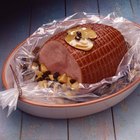
Should I Glaze Ham if I'm Baking in a ...
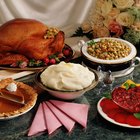
How to Cook Split Bone Turkey
How to Cook in Tabletop Convection Ovens
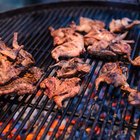
How to Cook a Partridge

How to Use Reynolds Oven Bags

Can You Bake Sliders?
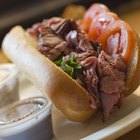
How to Cook Roast Beef in a Baby George ...

Can You Use a Glass Pan to Cook a Roast?
Convection Broiling Vs. Convection ...
How to Cook Brisket Slowly With a ...
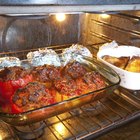
How Does a Convection Oven Work?
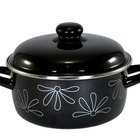
What Is the Difference Between a ...
References
Writer Bio
Fred Decker is a trained chef and prolific freelance writer. In previous careers, he sold insurance and mutual funds, and was a longtime retailer. He was educated at Memorial University of Newfoundland and the Northern Alberta Institute of Technology. His articles have appeared on numerous home and garden sites including GoneOutdoors, TheNest and eHow.
Photo Credits
Jupiterimages/Comstock/Getty Images